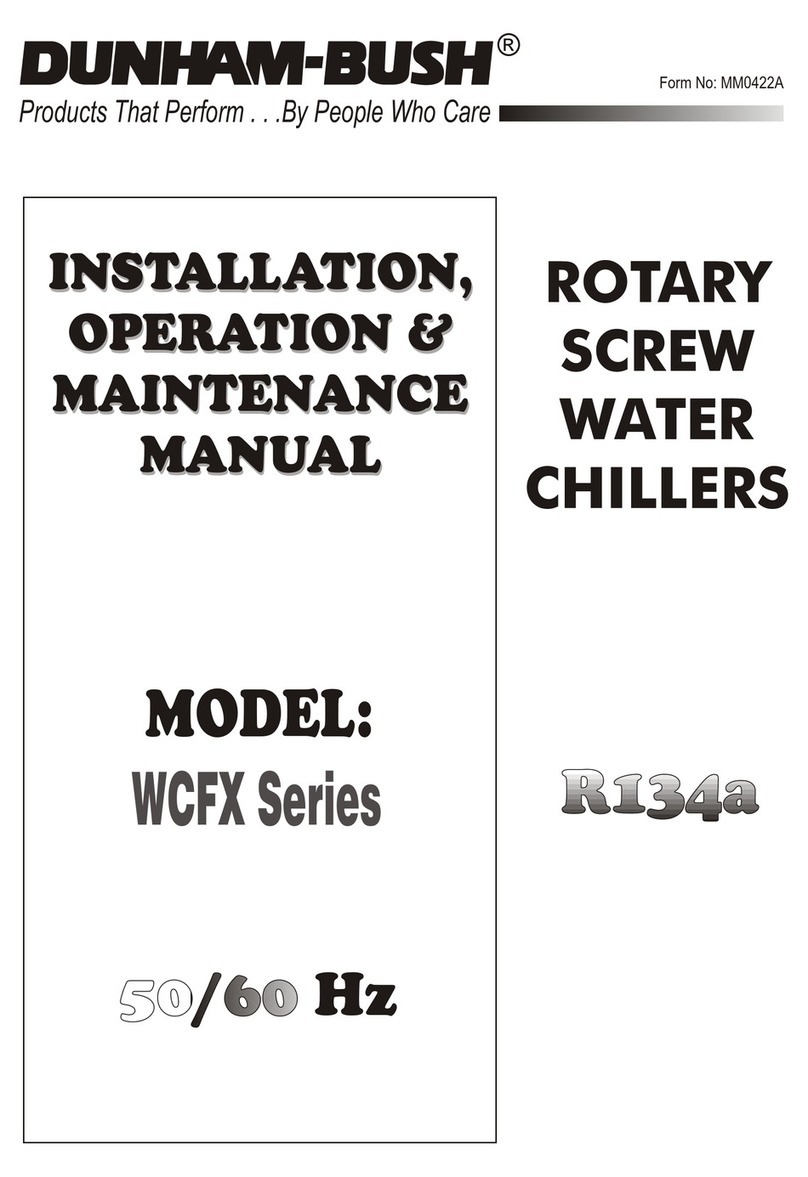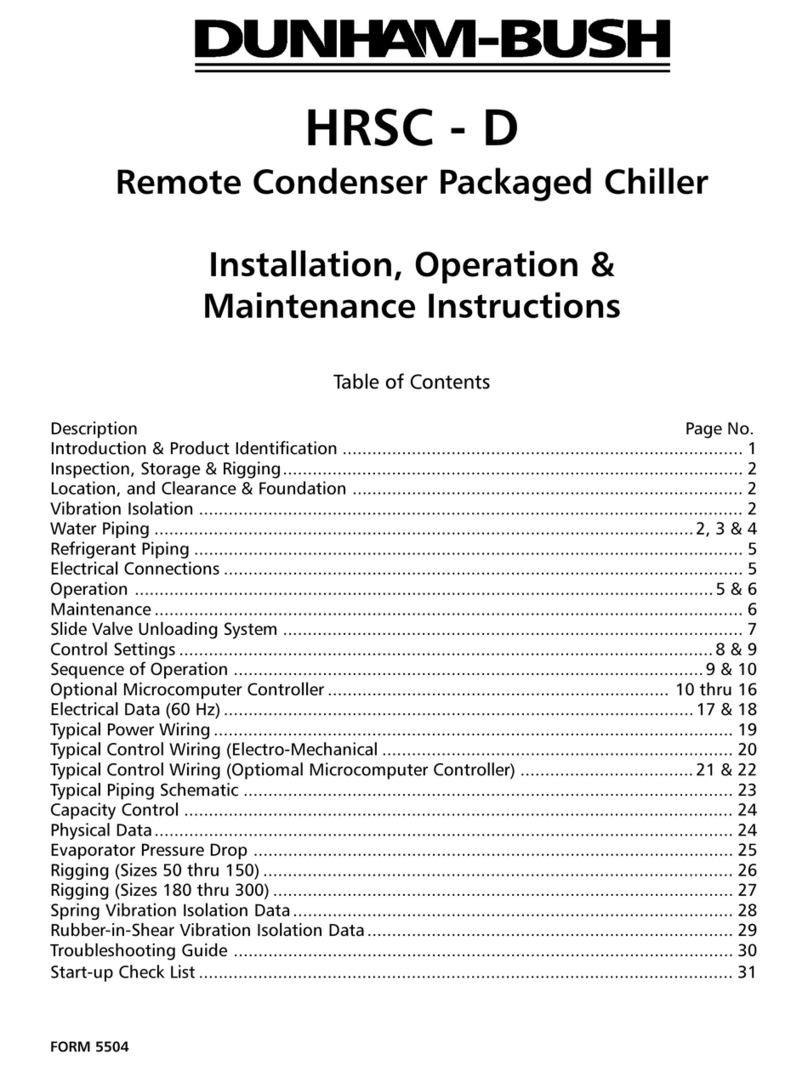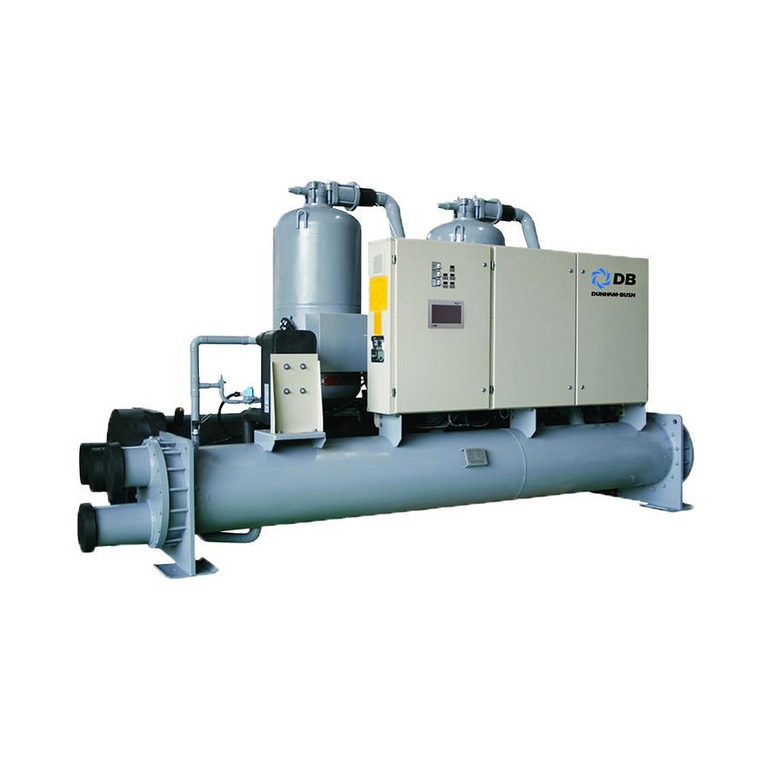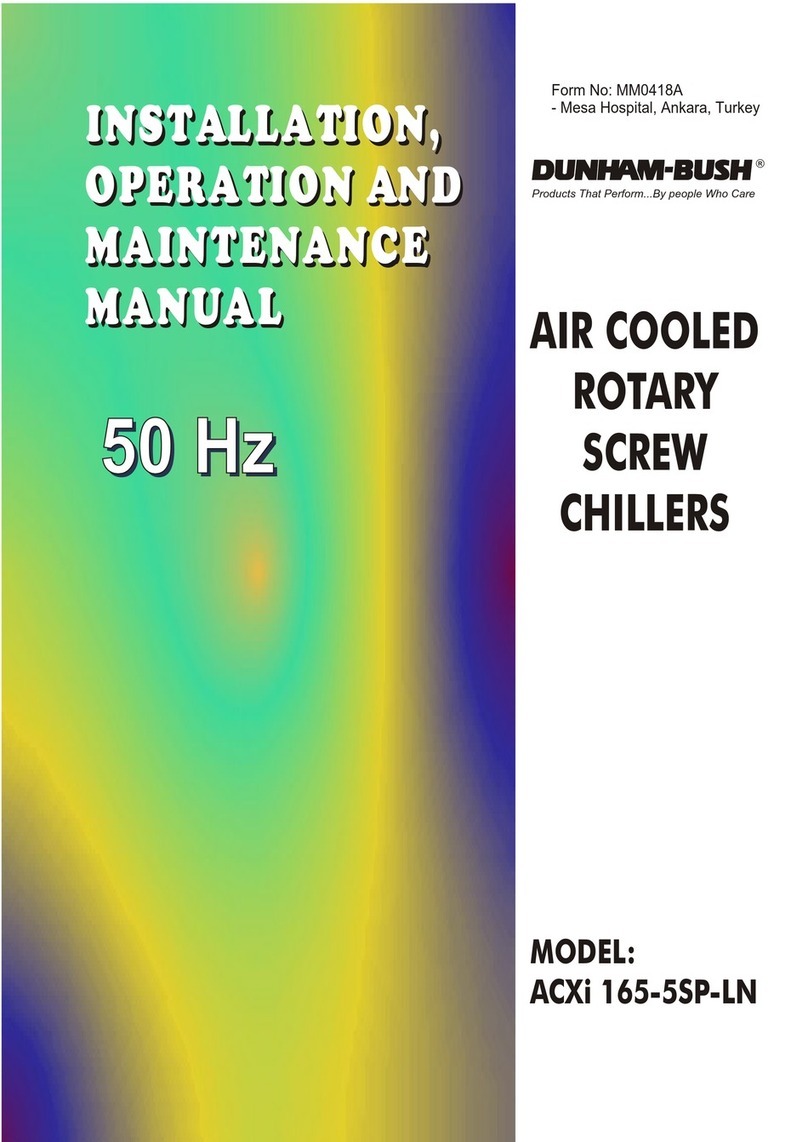
- 6 -
2.0 INSTALLATION
2.1 GENERAL
The ACDS chiller is designed to cool water or
other non-corrosive liquids. Water is circulated
through the direct expansion evaporator where it
is cooled to the desired temperature and then
circulated to cooling coils for air conditioning, or to
other types of heat exchangers for process
cooling.
Care should be taken to ensure that the
equipment is properly installed and adjusted. An
installer or operator should first be familiar with
the information in this manual.
2.2 INSPECTION
When the equipment is delivered, it is important
that the following inspection be completed in the
presence of the carrier's representative:
1. Check all crates and cartons received against
the Bill of Lading/Shipping Papers to be sure
they tally.
2. Check the model number and the electrical
characteristics on the nameplate to determine
if they are correct.
3. Check for freight damage, shortages or other
discrepancies and take note of them on the
delivery receipt before signing.
Should any damage be found, a damage
claim should immediately be filed by the
purchaser against the delivering carrier as all
shipments are made at the purchaser's risk.
2.3 RIGGING
2.3.1 GENERAL
Each unit has been carefully tested and
packed at the factory where every care is
taken to ensure that the unit reaches you
in perfect condition. It is very important
that the riggers and movers use the same
care and precaution in moving the
equipment into place. Make sure that
chains, cables, or other moving
equipment are placed so as to avoid
damage to the unit or piping. The
refrigerant piping should not be used as a
ladder or as a handle. Do not attach a
chain hoist sling to the piping or
equipment. Move the unit in an upright
position and let it down gently from trucks
or rollers.
2.3.2 RIGGING AND MOVING
Any unit mounted on skids may be moved
with a forklift, but care must be taken not
to damage the unit with forks. The skids
should not be removed until the unit is at
its final location.
The ACDS model can be lifted by the
method showing in Figure 2.3.2.
2.4 SPACE REQUIREMENTS
AND CLEARANCE
2.4.1 GENERAL
The dimensional data and clearances that
follow are useful for determining space
requirements. The unit should be placed
to make the clearance noted available for
proper servicing. Failure to allow such
clearance will cause serious problems
and result in higher costs for operation,
maintenance and repair.
2.4.2 ACDS
The dimensional data are shown in
Figure 2.4.2B and space requirements
are shown in Figure 2.4.2A. The most
important consideration which must be
taken into account when deciding on the
location of an air cooled equipment, is the
provision for supply of ambient air to the
condenser, and removal of heated air
from the condenser area. When this
essential requirement is not provided, it
will result in higher condensing
temperatures, which will cause poor
operation, higher power consumption and
eventually failure of equipment. Units
must not be located in the vicinity of
steam, hot air or fume exhausts.
Another consideration which must be
taken into account is that the unit should
be mounted away from noise sensitive
spaces and must have adequate support
to avoid vibration and noise transmission
into the building. Units should be
mounted over corridors, utility areas, rest
rooms or other auxiliary areas where
sound levels are not an important factor.
Sound and structural experts should be
consulted for recommendations on critical
installations.


































